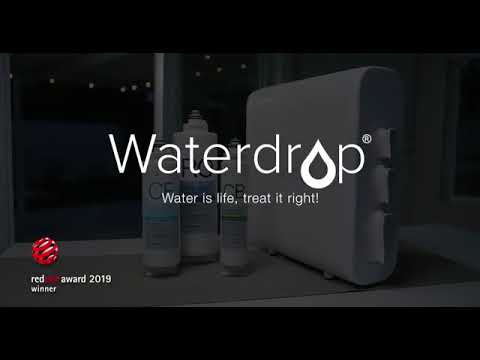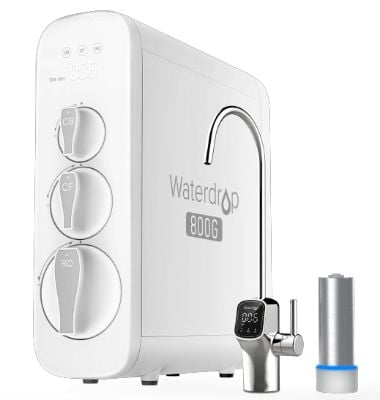
Scoring basis
- Filtration (45%): RO barrier + carbon + UV
- lab-proven PFAS removal and broad contaminant reduction (microplastics results soon)
- Flow/Pressure (20%): Tankless RO with high throughput (800 GPD) and consistent sink pressure
- Install/Maint (10%): Compact under-sink footprint
- DIY-friendly with quick-change filters
- Build (10%): Modern design, efficient smart pump, lead-free faucet
- Taste (5%), Cost (5%), Transparency (5%)
The Waterdrop G3P800 is a tankless under-sink RO system. In our Tap Score testing, it eliminated trihalomethanes and barium and cut salts by 85%. The result: bottled-water quality that frees up cabinet space.
Highlights
- Compact tankless design freed up my cabinet space
- Wastes far less water than traditional RO systems
- Delivers steady, fast flow at the faucet
- Certified to remove dozens of regulated contaminants
- Easy cartridge swaps — takes minutes, no tools needed
Best for: Families who need reliable protection from salts and disinfection byproducts, with a modern RO that saves space and wastes less water.
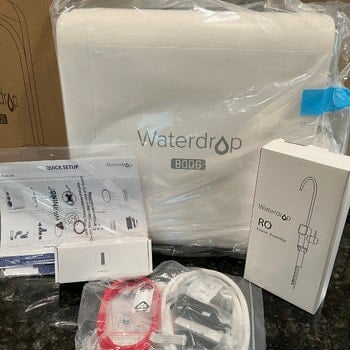
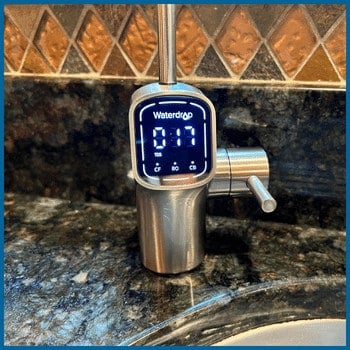
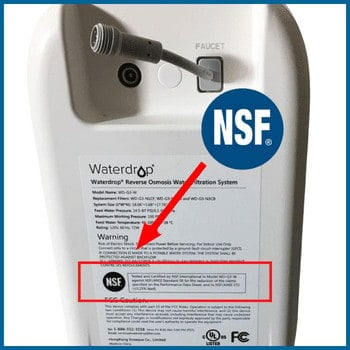
Pre-G3P800 Install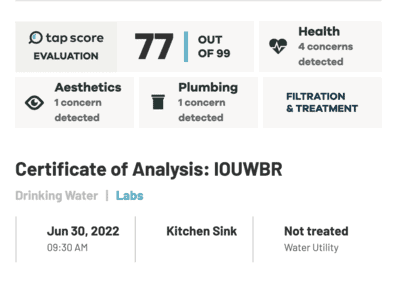
Post-G3P800 Install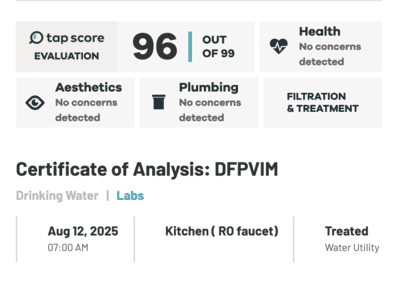
Numbers are numbers — here’s what they mean. Before installing the G3P800, my tap water tested with over 30 ppb of chloroform, 67 ppm of chloride, and nearly 200 ppm of dissolved solids. Post-install?
All trihalomethanes gone, barium undetectable, and overall solids cut by ~85%. That’s the kind of delta you feel when you drink it.
🔬 Tap Score Lab Results — Waterdrop G3P800
| Parameter | Before | After | Change |
|---|---|---|---|
| Total THMs iEPA MCL: 80 ppb | 31.83 ppb | NDRemoved | −100% |
| Chloroform (THM) | 21.57 ppb | NDRemoved | −100% |
| Bromodichloromethane | 7.85 ppb | NDRemoved | −100% |
| Dibromochloromethane | 2.33 ppb | NDRemoved | −100% |
| Sodium | 46.3 ppm | 7 ppm | −85% |
| Chloride | 67.26 ppm | 11 ppm | −84% |
| Barium iEPA MCL: 2 ppm | 0.01 ppm | NDRemoved | −100% |
| Total Dissolved Solids (TDS) | 187 ppm | 28 ppm | −85% |
Context & Methods
“ND” = Not Detected above the lab reporting limit. THMs compared to EPA MCL (80 ppb). Barium compared to EPA MCL (2 ppm). Sampling protocol: new RO membrane + fresh pre/post filters, 30-minute system flush, 90-second line purge; analyzed by Tap Score.
Pre-test (before installing G3P800):
View lab report
Post-test (after 3+ years of use on G3P800):
View lab report
🧪 PFAS Results (Aug 2025)
PFAS Panel (14 analytes): All Not Detected (ND) after treatment with Waterdrop G3P800.
- PFOA — ND
- PFOS — ND
- PFHxS — ND
- PFNA — ND
- 10 additional PFAS — ND
Full PFAS report: View PFAS lab report (Tap Score)
🧪 Microplastics Results (Aug 2025)
Test type: Microplastics (Fluorescence Microscopy, EMSL Analytical via Tap Score) — sample from Waterdrop G3P800 RO spout. “ND” = Not Detected above the lab reporting limit (RL).
- 1000–5000 µm — ND (RL 0.0157 count/mL)
- 500–1000 µm — ND (RL 0.0157 count/mL)
- 100–500 µm — ND (RL 0.0157 count/mL)
- 50–100 µm — 0.0314 count/mL (RL 0.0157)
- 10–50 µm — 0.0157 count/mL (at RL)
- <10 µm — ND (Presence/Absence method)
Full microplastics report: View Tap Score report
💡 Quick takeaway: I’ve run the G3P800 for 3+ years, and the lab data still lines up with what I taste daily. No more chemical “edge” in coffee or tea, and plain water finally tastes neutral. Performance hasn’t dropped off — the same 85% TDS reduction shows up after multiple filter changes. For me, that consistency is the biggest win.
🌟 Why It Stands Out
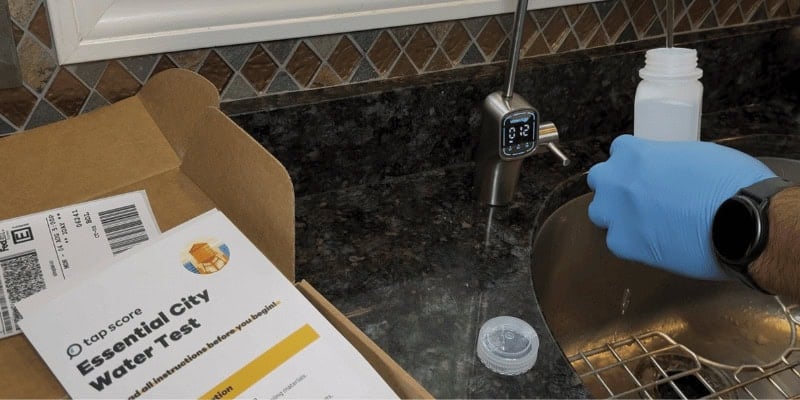
Most RO systems clean water well but waste a lot of it. The G3P800 flips that: its 3:1 pure-to-drain ratio means three gallons of drinking water for every one sent to waste — a big jump from the older 1:3 or 1:4 setups.
It’s also NSF/ANSI certified across multiple standards, confirming both contaminant reduction and material safety. With a tankless build that fits neatly under the sink, it saves space while cutting salts and byproducts. For households wanting efficiency without bulk, it’s a practical upgrade.
Pros
- Set-and-forget reliability — After years of use, the output hasn’t drifted. Lab numbers and taste are as solid as day one.
- Smart faucet reminders — No guessing games; the light prompts filter changes at the right time.
- Quiet operation — Runs in the background without the pump hum I’ve noticed on other RO systems.
- Better daily flow — Not just fast at the glass, but consistent pressure even when filling pots or cooking.
- Eco-conscious build — Uses less plastic on replacement filters compared to some tank-style models.
Cons
- Outlet required — Needs a plug under the sink, which not every kitchen has handy.
- One-style faucet — No design options if you want to match a specific finish.
- No built-in remineralization — Water is ultra-pure but can taste flat or slightly acidic. Waterdrop sells a $30 remineralization add-on, though I kind of wish it just came standard.
My Take
Reverse osmosis has always been the gold standard for clean water, but most systems come with baggage: tanks that eat cabinet space, constant cleaning, and not enough output for a busy household. The G3P800 sidesteps all of that.
What’s struck me most isn’t just the lab data — it’s how invisible the system feels day to day. No waiting, no odd taste, no babysitting. I turn on the tap and get the same clean water I tested for years ago. Coffee lost that chemical “edge,” pasta water boils clear, and it simply works.

💵 Cost of Ownership (3+ Years In)
- RO membrane: Replaced 2× in 3+ years (one swap was early for a lab test). At ~$120 each, that’s $240.
- Carbon filters: One CF + one CB per year, ~$30 each = $60/year. Over 3 years: $180.
- Total filter spend (3+ years): ≈ $420 (our true costs).
- Average yearly cost: ≈ $140/year.
- Cost per gallon: ~2.5 gal/day × 365 = 912 gal/year → ≈ $0.15 per gallon.
👉 Vs bottled water: At ~$3.80 per gallon, 912 gallons/year would cost $3,465/year in bottled water. Over 3 years, that’s $10,395 vs ~$420 in filter costs.
💡 Money-Saving Tip: Waterdrop frequently runs coupon deals, and if you use their Subscribe & Save option, you can cut filter costs by another 5–15%. That can drop your cost-per-gallon even further, closer to $0.12–$0.13/gal over the long term
🧩 Optional Add-on: If you want spring-like taste or pH stability, Waterdrop sells a $30 remineralization cartridge. It’s inexpensive, but given how common remin is becoming, I wish it were bundled by default. Adding it yearly would bring your 3-year filter spend to about $510 total — raising cost-per-gallon from $0.15 to around $0.18 (still pennies compared to bottled water).
📝 Long-Term Ownership Notes
- Performance: Water quality has remained strong. TDS climbs gradually as filters age, but swaps reset it.
- Faucet durability: The included faucet tends to loosen over time (especially with kids turning it) — occasional tightening fixes it.
- Maintenance rhythm: Yearly CF + CB replacements and ~24-month RO swaps have been enough to keep it running smoothly.
⚖️ Compare Other Leading Brands

- Waterdrop G3P400 Under Counter Water Filter RO System: This system is similar to the G3P800, but with a smaller capacity and fewer features. It may be better for those who don’t need as much water filtration or have limited space under their counter.
- NU Aqua Tankless Reverse osmosis 600GPD System: This system cheaper than the G3P800, the difference is a higher flow-rate thanks to its pressure-booster, but its not a space saver like Waterdrop. The filtration system is pretty similar to the G3P800 – it’s pretty good system.
- iSpring RCC7AK 6-Stage Under Counter Reverse Osmosis System: This system has a similar capacity to the G3P800, but it has a few more features like an alkaline filter and a UV sterilizer. It is a bulky system, so if you don’t have a lot of room to spare, consider the above.
Each of these systems have their own set of advantages and disadvantages, it’s up to you to decide which is best for you. I’ve owned this system for over 3 years now and love it a lot – the reviews are glowing online in comparison to similar models. I just recently changed out the carbon filter that was as simple as twisting a bottle cap.
🔧 Installation and Maintenance
Installing and maintaining the Waterdrop G3P800 is a breeze. Here’s what you need to know:
- Feed Water Adapter – Shut off water, release faucet pressure, disconnect cold pipe, attach adapter, reconnect.
- RO Faucet & UV Sterilizer – Insert spout, feed stem/cord through countertop, secure from below, attach UV.
- Drain Saddle – Drill ¼” hole in drainpipe, insert tubing, secure with back plate.
- System Housing – Position system under sink with panel accessible.
- Tubing Connections – Connect inlet, filtered, and waste lines; lock clips in place.
- Power – Connect faucet and UV to system, then plug in power adapter.
- Filters – Insert and twist cartridges until clicked.
- System Start – Turn on water, check for leaks, flush 5 min, then run faucet for 30 min.
🗣️ Customer Reviews and Feedback

The Waterdrop G3P800 is backed by strong real-world reviews. On TrustPilot, Waterdrop holds a 4.7/5 rating across more than 6,000 reviews.
Owners consistently point to:
- Simple installation that most complete in under an hour.
- Cleaner-tasting water with noticeable improvements in coffee and tea.
- Lower filter costs compared with other RO systems.
- Minor drawbacks like a faint pump hum or needing to confirm the right filter size, though most note Waterdrop’s support is quick to help.
The consensus: the G3P800 delivers reliable performance and better-tasting water, making small trade-offs well worth it.
🚀 Performance Features
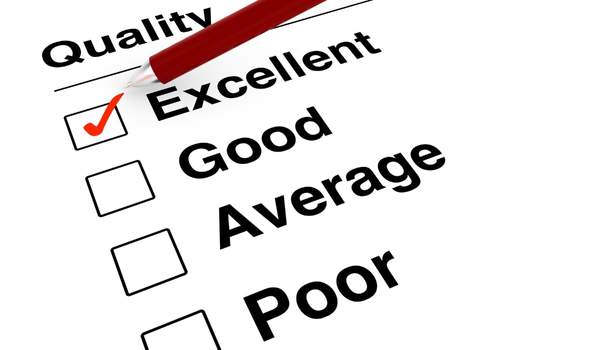
Water filters may look alike, but their performance, ratings, and features make a difference. Water filters may look alike, but their performance features make a difference. Is the G3P800 the best under sink water filter for your unique needs? Let’s find out.
The Waterdrop G3P800 removes these substances and hundreds more:
- Chlorine
- Chloramine
- PFOA
- PFAS
- Lead
- Mercury
- Arsenic
- Fluoride
- Chromium
- Trichloromethane
- Minerals
- Pesticides
- Herbicides
- Industrial chemicals and pharmaceutical residues
Total dissolved solids (TDS) are lowered more than 90-percent — water not only tastes pure, it is.
The G3P800 can also make water biologically safe to drink under normal circumstances — it removes the most common bacteria and parasites, making it an ideal backup system in areas where water sanitation is unreliable.
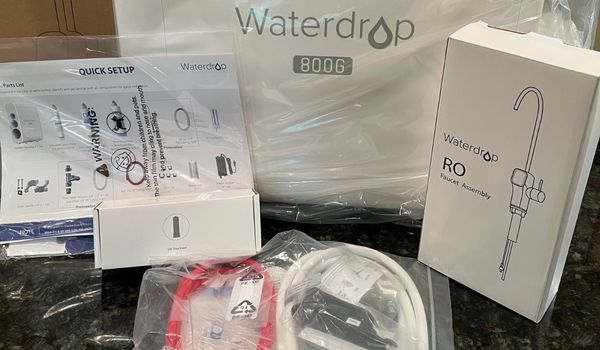
📌 Key Considerations
- Quick install: About 30 minutes with the included guide/video; no plumber required.
- High capacity: Produces up to 800 gallons daily — a 1-gallon jug fills in ~2 minutes.
- Good value: Compact form at a fair price with long-term cost savings over bottled water or tank systems.
- Predictable upkeep: Filters last 6–36 months depending on type, meaning fewer changes and lower hassle.
- Consistent water quality: Cuts chlorine byproducts, salts, and heavy metals for noticeably clean taste.
- Built to last: Durable construction — no material issues observed in extended use.
- Low noise: Runs quietly; in very quiet homes you may hear a brief 15–30 second hum.
📍Please Note: One quirk of tankless RO designs is what’s called TDS creep — when the system first kicks on, dissolved solids can briefly spike because water sitting on the membrane mixes back in. In practice, this clears within a few seconds of running the faucet, but it’s something to keep in mind if you’re only filling a small glass.
Capacity
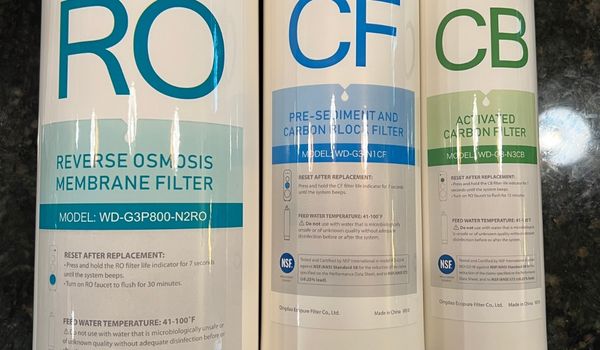
The G3P800 filters up to 800 gallons of water daily — enough to keep up with any household. Filter life varies by cartridge: carbon at ~6 months, composite at ~12, and the Dow membrane averaging 24 months.
Micron Rating
The RO membrane strains particles down to 0.0001 microns, removing bacteria, protozoa, and the finest dissolved solids that slip past other filters.
Flow Rate
Most RO systems trickle, but the G3P800’s pump delivers water at 0.28 gallons per minute — nearly 10× faster than the 0.03 GPM of traditional units. A full glass fills in seconds, not minutes.
Design and Installation
The compact, tankless body slides neatly under standard sinks. Setup typically takes under an hour, though installing the faucet on granite or other dense materials may need extra tools.
Filter Change Indicator
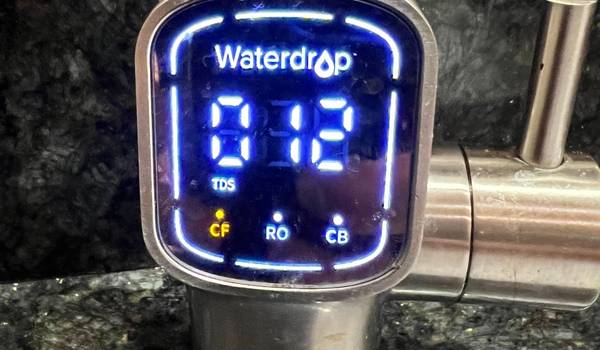
Smart sensors track filter life and alert you on the digital display. Swapping cartridges is twist-and-click simple — faster than making a sandwich.
Help and Support
Backed by a 1-year warranty and responsive support team, Waterdrop provides replacement guidance and troubleshooting via phone, email, or video tutorials.
Final Thoughts
The G3P800 combines bottled-water quality with everyday convenience — a system that runs quietly in the background while saving space, water, and long-term costs.
❓Frequently Asked Questions
Yes — it reduces fluoride by up to 98% in lab testing.
The system uses three cartridges: carbon (≈6 months), composite (≈12 months), and membrane (≈24 months). The smart faucet light tells you when it’s time.
Not directly. Well water often carries sediment, iron, or hardness that can clog or damage the RO membrane. A pre-treatment system (such as a sediment filter or water softener, depending on your water test results) should be installed first. Adequate pressure (14.5–87 psi) is also required for the RO to function properly.
It runs quietly overall. During regeneration, you may hear a faint hum for 15–30 seconds — noticeable only in very quiet homes.
 135 people found this helpful. Was this guide helpful to you?
135 people found this helpful. Was this guide helpful to you? 
